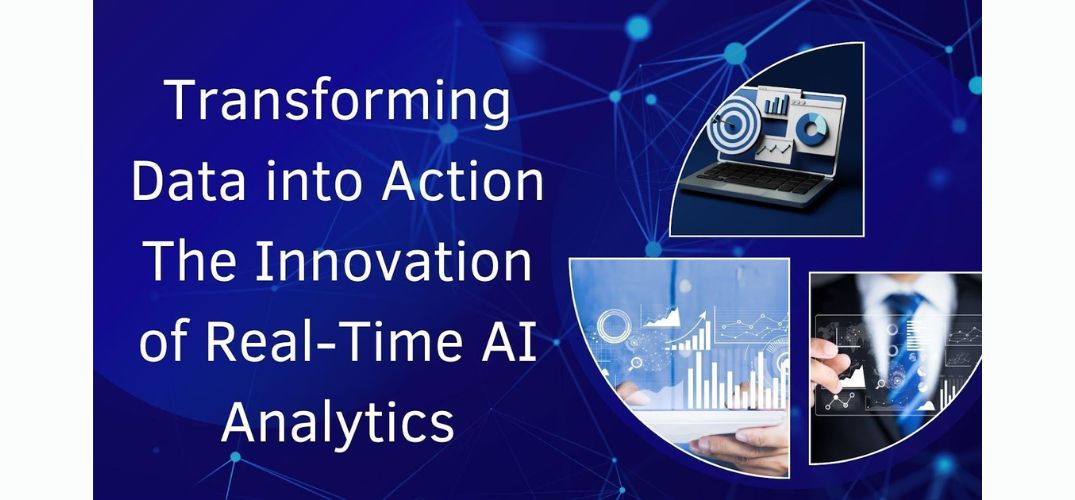In this digital era, data-driven innovation has become a cornerstone of progress, shaping industries and driving growth. Real-time analytics is emerging as a pivotal force, empowering organizations to act swiftly and intelligently. Recent advancements explore transformative approaches to harness AI for real-time data processing, offering scalable solutions to modern challenges. By delving into the intersection of AI and analytics, Shashank Reddy Beeravelly’s innovations pave the way for smarter, faster, and more impactful decision-making.
Revolutionizing Data with Real-Time Insights
The velocity at which data is generated today demands systems that can process and act on it almost instantaneously. Real-time analytics, powered by AI, bridges this gap by enabling organizations to make decisions in the moment rather than relying on retrospective analysis. This paradigm shift transforms raw data into actionable insights, revolutionizing industries from healthcare to finance.
Key innovations include dynamic data aggregation, where disparate data streams are processed in real-time, and predictive modeling capabilities that proactively highlight emerging trends. These advancements enhance operational efficiency and foster a proactive approach to decision-making.
AI as the Engine of Transformation
Artificial intelligence (AI) lies at the core of the transformation in real-time analytics. Machine learning algorithms enable systems to adapt and enhance their performance as they process increasing volumes of data. AI-powered platforms utilize natural language processing (NLP) to interpret unstructured data, such as text and speech, and employ computer vision to analyze visual inputs, making them highly versatile across various industries.
Moreover, AI integration ensures scalability, empowering organizations to manage exponential data volume and complexity growth without compromising performance. This adaptability is essential for meeting dynamic market demands while maintaining precision, reliability, and competitive advantage in an ever-evolving landscape.
Overcoming Challenges Through Innovation
While real-time AI analytics holds transformative potential, challenges like data security, latency, and integration complexities remain critical. Innovative solutions are emerging to overcome these hurdles effectively. Edge computing, for example, reduces latency by processing data closer to its source, ensuring rapid response times while maintaining accuracy.
Simultaneously, advanced encryption techniques and dynamic access control mechanisms fortify data security, protecting sensitive information and fostering trust in these systems. Integration frameworks built with modular architectures enable seamless compatibility with legacy infrastructures, minimizing disruptions and reducing downtime. These advancements collectively ensure that real-time analytics remains reliable, secure, and adaptable to evolving business needs.
Driving Business Impact with Analytics
Organizations harnessing AI-powered real-time analytics are experiencing transformative shifts in their operations and outcomes. From delivering highly personalized customer experiences to streamlining supply chains through predictive maintenance, these systems redefine efficiency and precision. Smarter resource allocation, based on dynamic data insights, optimizes productivity while minimizing waste.
Beyond operational benefits, real-time analytics empowers businesses to anticipate market trends and predict consumer behaviors, offering a strategic advantage in competitive industries. By enabling rapid, data-driven decisions, it ensures businesses remain agile and responsive in a fast-evolving landscape. As industries continue to innovate, real-time analytics stands as a cornerstone of modern strategic excellence.
The Road Ahead: Evolving with AI
The future of real-time analytics lies in its relentless progression, driven by cutting-edge advancements like quantum computing and next-generation neural networks. These technologies promise to revolutionize AI analytics, enabling unparalleled speed, precision, and scalability. As these systems evolve toward greater autonomy, they will liberate organizations from manual data management, allowing them to concentrate on strategic decision-making and innovation.
Sustainability also emerges as a crucial focus in this journey. The development of energy-efficient algorithms and the adoption of green data centers demonstrate a growing commitment to aligning technological advancements with environmental stewardship. By integrating sustainability into their core, analytics platforms are not only redefining efficiency but also ensuring responsible innovation. This evolution encapsulates the dual mission of driving transformative progress while safeguarding the planet for future generations.
In conclusion, Shashank Reddy Beeravelly‘s groundbreaking work in real-time AI analytics represents a transformative force, redefining how data is leveraged for smarter and faster decision-making. His contributions highlight the immense potential of integrating AI with analytics, setting a new benchmark for agility and intelligence. As industries increasingly adopt these advancements, real-time analytics is poised to reshape the future of efficiency and innovation.
































